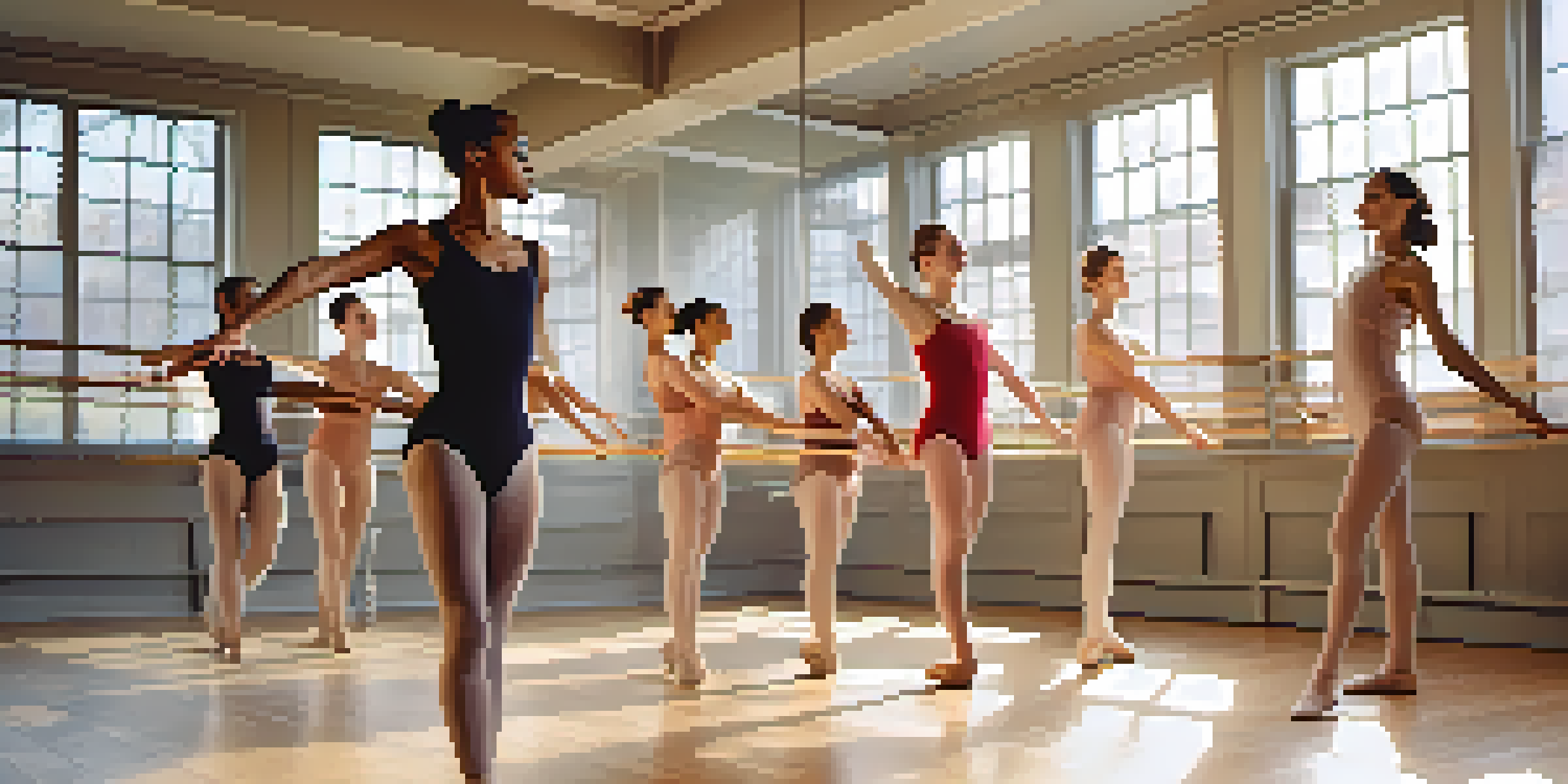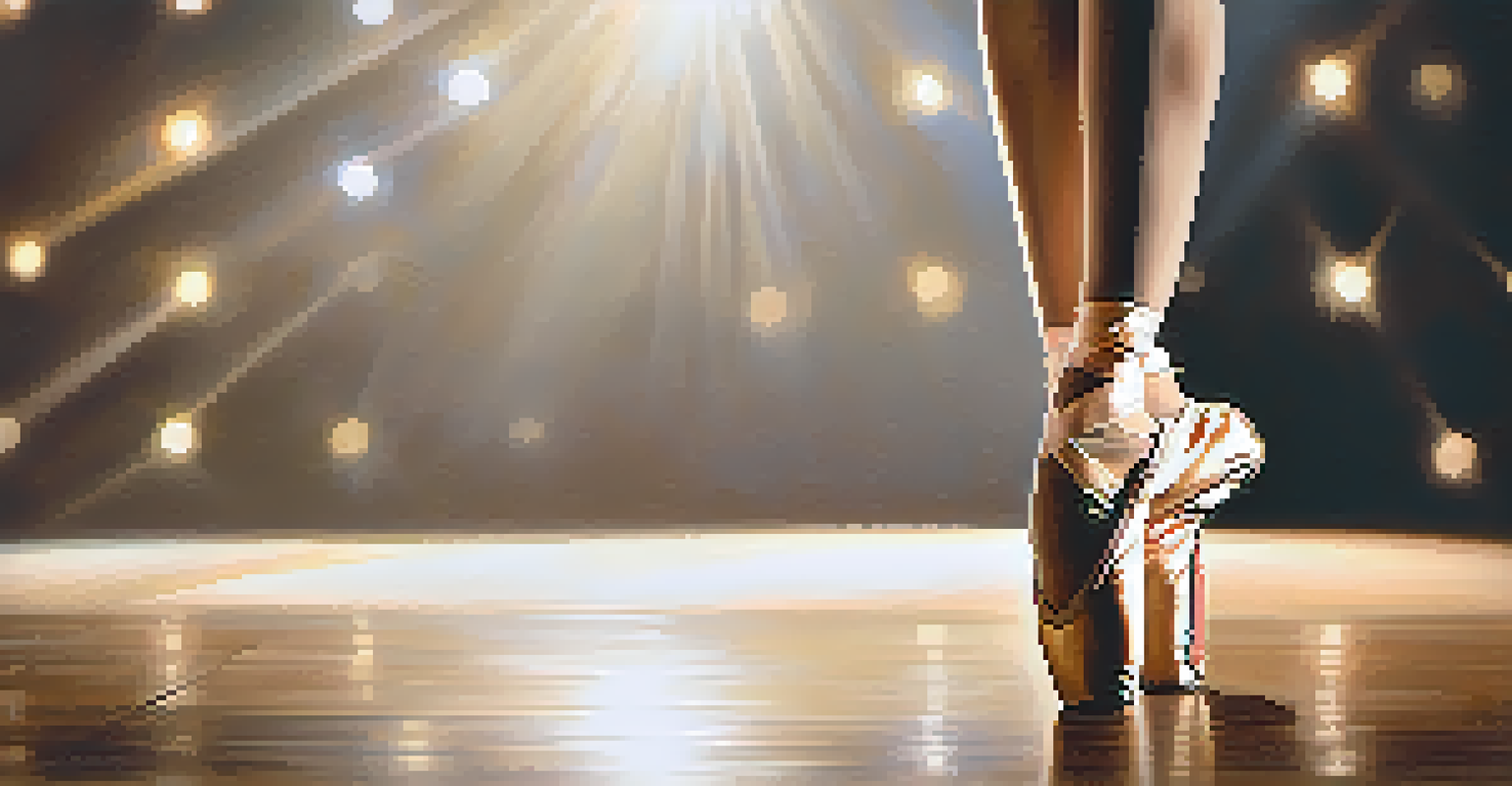Ballet and Social Justice: Breaking Barriers in Dance

The Intersection of Ballet and Social Justice
Ballet has long been viewed as a traditional art form, often seen as exclusive and elitist. However, the landscape is shifting as dancers and choreographers begin to recognize the importance of social justice within this graceful discipline. By addressing issues like race, gender, and accessibility, the ballet community is stepping up to create a more inclusive environment for all.
Art is a reflection of society, and if society is not inclusive, then art cannot be either.
This merging of ballet and social justice is not just about representation; it’s a powerful way to challenge societal norms. Dancers are using their platforms to advocate for change, showcasing stories that resonate with diverse audiences. With performances that reflect real-world struggles, ballet is becoming a vehicle for dialogue and understanding.
As artists begin to embrace this intersection, they highlight the voices and experiences that have historically been marginalized in the dance world. This shift not only enriches the art form but also empowers individuals to connect with ballet on a deeper level, making it a reflection of the society we live in.
Breaking Down Barriers in Dance Education
Access to ballet education has traditionally been limited, often favoring those from affluent backgrounds. However, initiatives aimed at breaking down these barriers are emerging across the globe. Programs that offer scholarships, free classes, and outreach efforts are making ballet more accessible to underrepresented communities.

These educational initiatives not only teach the technical aspects of ballet but also encourage self-expression and creativity. By fostering an inclusive environment, students from diverse backgrounds can explore their identities through dance. This empowerment can lead to increased confidence and a sense of belonging within the dance community.
Ballet Embraces Social Justice
The ballet community is increasingly addressing issues of race, gender, and accessibility to foster inclusivity and representation.
As more schools and organizations recognize the importance of inclusivity in dance education, the next generation of ballet dancers is becoming more diverse. This diversity is crucial as it paves the way for a richer ballet landscape that truly reflects the complexity of human experiences.
Choreography as a Tool for Social Change
Choreographers are essential in the movement towards social justice in ballet. By creating works that address pressing social issues, they can provoke thought and inspire action within audiences. For instance, pieces that explore themes of identity, race, and gender challenge the status quo and encourage viewers to engage in critical conversations.
Dance is the hidden language of the soul.
These innovative choreographic choices allow dancers to embody narratives that resonate with their own experiences, making the performances feel personal and impactful. When audiences witness these stories unfold on stage, it can lead to a deeper understanding of the challenges faced by marginalized communities.
Moreover, this approach to choreography not only elevates the art form but also serves as an educational tool. By intertwining dance with social issues, choreographers can foster empathy and encourage audiences to reflect on their own beliefs and biases.
The Role of Dance Companies in Advocacy
Many ballet companies are taking a proactive stance on social justice by integrating advocacy into their missions. This means not only performing diverse works but also engaging with communities through outreach and education. By building relationships with local organizations, these companies can create impactful programs that address social issues head-on.
For example, some companies have collaborated with social justice organizations to host workshops and community events that promote dialogue and understanding. These initiatives not only broaden the reach of ballet but also demonstrate how the art form can serve as a catalyst for change.
Diverse Casting Enhances Storytelling
A movement for equitable casting practices in ballet enriches performances and inspires young dancers from diverse backgrounds.
As ballet companies continue to embrace their role as advocates, they are redefining what it means to be a part of the dance community. This commitment to social justice enhances their relevance in today’s society and attracts a more diverse audience eager to engage with the art form.
Promoting Diversity in Casting and Representation
Casting in ballet has historically favored certain looks and backgrounds, often sidelining talented dancers from diverse ethnicities. However, there is a growing movement within the ballet community advocating for equitable casting practices. By prioritizing diversity in their productions, companies not only enrich their performances but also reflect the world we live in.
This push for diverse representation extends beyond the stage; it influences who is seen as a role model in the ballet world. When young dancers see people who look like them in lead roles, it inspires them to pursue their dreams, knowing that they too can achieve greatness in ballet.
Furthermore, diverse casting promotes a richer storytelling experience. Each dancer brings their unique perspective to a role, enhancing the emotional depth of performances and allowing for a broader range of narratives to be told.
The Impact of Social Media on Ballet and Activism
Social media has transformed the way ballet and social justice intersect, providing a platform for advocacy and awareness. Dancers, choreographers, and companies are using platforms like Instagram and TikTok to share their stories, promote inclusivity, and highlight social injustices. This digital space allows for instant engagement and a broader reach than ever before.
Through social media, dancers are able to connect with audiences on a personal level, sharing their journeys and the challenges they've faced. This transparency fosters a sense of community and support, encouraging others to join the conversation around social justice in ballet.
Social Media Amplifies Advocacy
Platforms like Instagram and TikTok empower dancers and companies to share their stories and promote social justice initiatives in ballet.
Moreover, the viral nature of social media can amplify important messages and movements, helping to mobilize action within the dance community. As more individuals engage with these platforms, the potential for ballet to drive social change grows exponentially.
Looking Ahead: The Future of Ballet and Social Justice
As the ballet community continues to embrace social justice, the future looks promising and dynamic. Emerging artists are already leading the charge, pushing boundaries and redefining what ballet can be. With an increasing focus on inclusivity, the art form is evolving to reflect the diverse world around us.
This evolution means that audiences can expect to see more innovative storytelling, diverse casting, and meaningful engagement with social issues. By breaking down traditional barriers, ballet is becoming more accessible and relevant to modern audiences.

Ultimately, the journey toward social justice in ballet is ongoing, but the strides being made are significant. As dancers, choreographers, and companies unite in this mission, the transformative power of ballet can spark change not just in the art world, but in society as a whole.